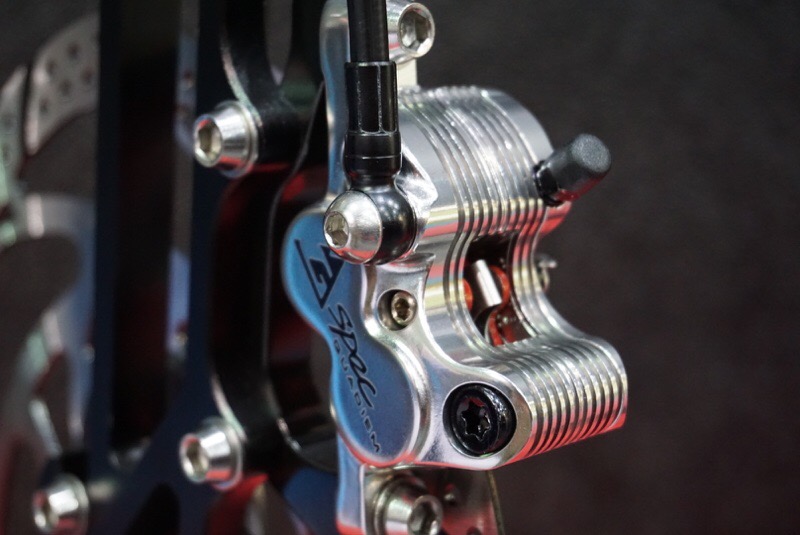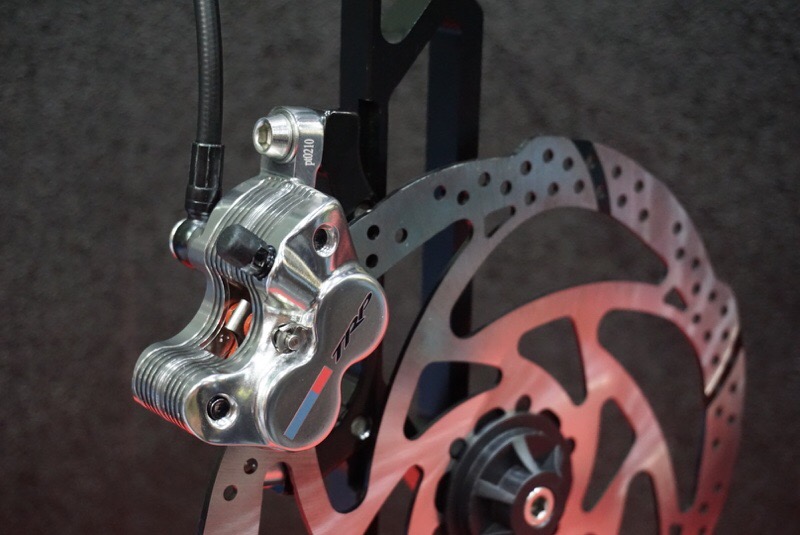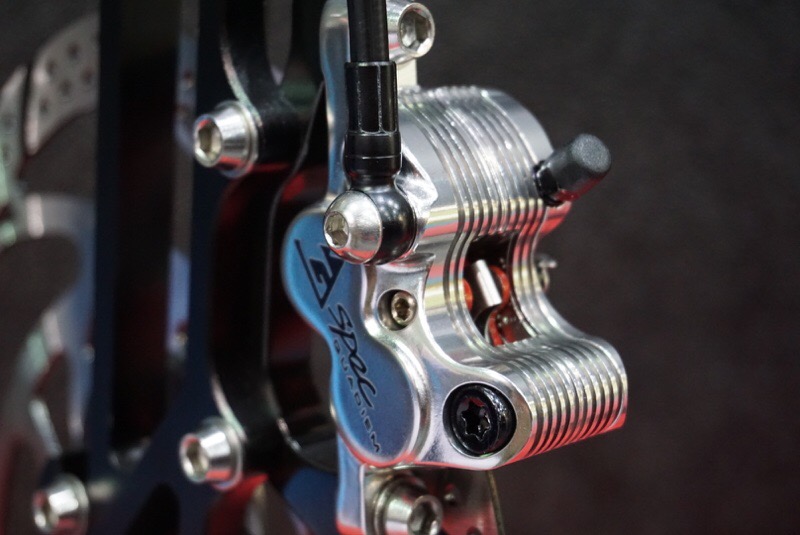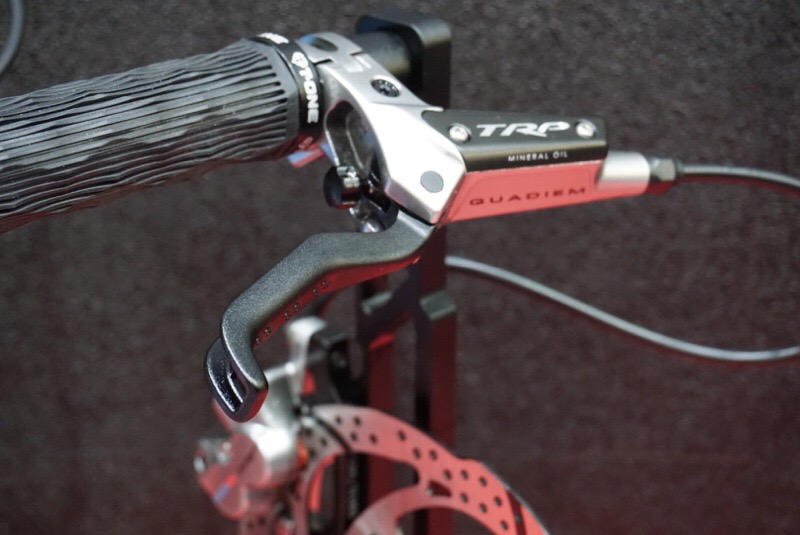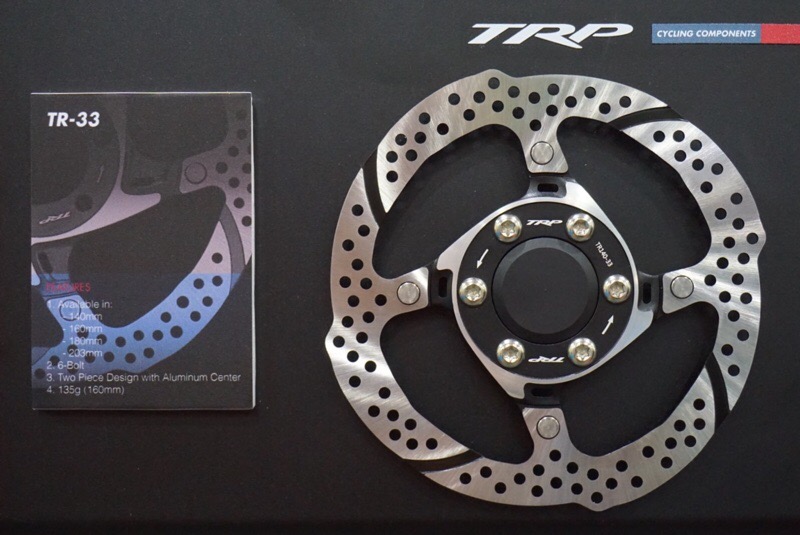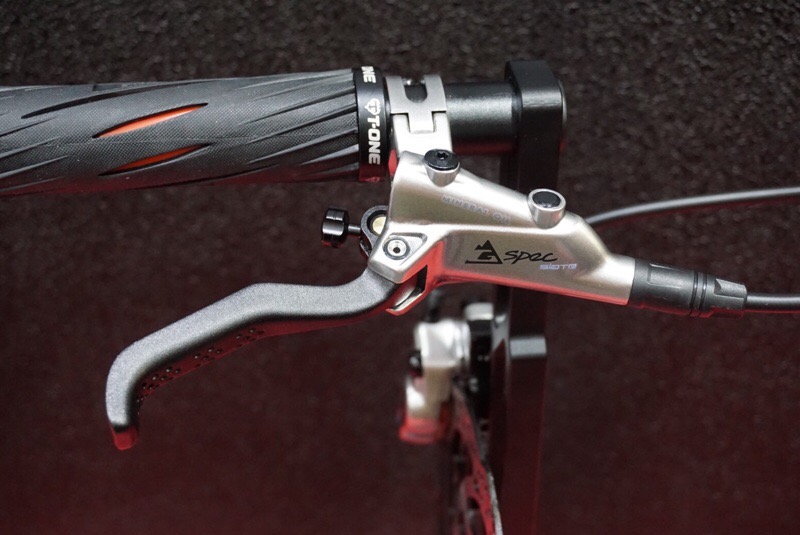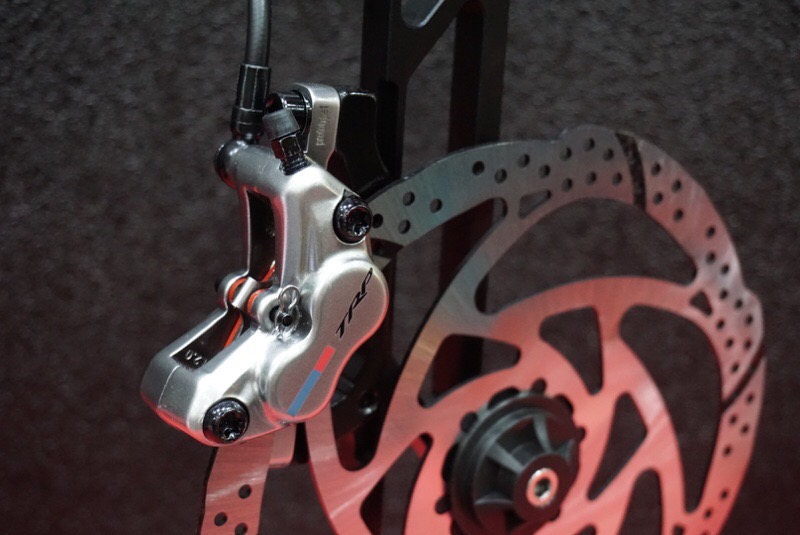The TRP Quadiem has been in their line as their 4-piston downhill brake for years, but last year they started working with Aaron Gwin. That led to a lot of development work, and the new G-Spec versions mean they’ve gotten the Gwin treatment.
The first thing he noticed was a slight bit (as in, 1-2mm) of pad movement during braking, and that’s actually something they’d heard in a vague manner from customers in the past…that the brakes were good, but they just didn’t stand out in any way. With Gwin’s input being much more specific, and TRP telling him they’d basically do anything he wanted, the upgrade project began in earnest.
First, they tightened up the machining tolerances, which actually meant an entirely new mold. Before, the area where the pads mounted was forged, so they couldn’t really adjust it. So, the new caliper molds place excess material there, then it’s machined away to tighter tolerances.
Inside the stainless steel pistons are a composite (Bakelite) that creates an insulating barrier -the back of the pad only touches the composite- so heat can’t transfer into the brake fluid. They use stainless steel because it lubricates easily and can be polished to an incredibly smooth surface. That means the interface between it and the seals is ultra slick, yet seals really well. Piston diameter is 16mm on both ends of the caliper, which delivers full, even power to the rotor. That makes it a little “grabbier, stabbier” compared to a brake with varying pistons sizes (like their Slate). This one’s aimed at the downhill crowd, where there’s a need for quicker, more dramatic speed scrubbing, so it makes sense here.
The grooves on the backside are machined in after forging, and they help with cooling by increasing surface area. The dramatic dip between the bolts holding the caliper halves together removed a lot of material compared to the prior Quadiem design, saving weight.
The opening above the pads isn’t as big as, say, Shimano, which means you can’t use finned pads, but there’s a reason. The larger the opening, the more flex the caliper body can have, which diminishes precision brake feel (which, if you’re Gwin, you might actually notice).
The lever blade went through seven or more iterations, starting with 3D prints to get the shape to his liking. Then they tested cast levers out on the trail, then finally CNCing prototypes for race testing. The indents on the lever blade get deeper as they move outward, being completely drilled through where your finger ends up resting.
Gwin wanted an easy to use, click-detent reach adjust, so he could count them and make sure they’re set up the way he likes and easy to repeat. The lever clamp was slimmed down, and it now works with both SRAM Matchmaker and Shimano i-Spec shifter mounts. The internals are the same as before, but the master cylinder’s body was given a little extra chiseling.
Retail is $199 per wheel, without rotor. Claimed weight is 320g (front, no rotor).
The standard (non G-Spec) Quadiem gets a painted caliper and lever, and the pistons are full stainless steel without the composites. The lever body is cast rather than forged and machined. Claimed weight is 325g, price is $149.99 per wheel.
Rotor options get expanded. Gwin’s running the TR-13, but there’s a new 6-bolt version of their two-piece rotor that adds the laser cut slots to help keep the pads clear. The two piece design sheds heat better since the carrier is alloy, and it makes it stiffer and less likely to make harmonic resonations (aka that squealing howl). Retail is $49.99 to $59.99 depending on size.
For enduro, trail and XC riding, the four-piston Slate also gets the G-Spec treatment and is updated with similar improvements as the Quadiem. It takes the same new lever blade and tool-free reach adjustment (the standard version loses the detents in the adjustment, though). Both versions use a cast lever body and have the same internals, but it already had the Matchmaker/i-Spec compatibility.
The regular version’s caliper carries over unchanged, but the G-Spec version upgrades to the hybrid composite-stainless pistons. They do use a mixed piston size (16mm / 14mm), which means they move at slightly different rates, so there’s more (better) modulation than with the Quadiem. There’s also a gaping hole on top, so finned pads will fit, but the Slates flex a bit more, which also makes them feel a little less punchy and easier to modulate. Weight for both is 290g, pricing is $119.99 and $149.99.
Both the Quadiem and the Slate use the same brake pads, and Gwin helped develop a new metallic pad that’ll be available as an aftermarket purchase. It’s more aggressive in its bite, and will last a little longer than the included, quieter resin pads. All of these items are available in early April, with an official launch at Sea Otter.
